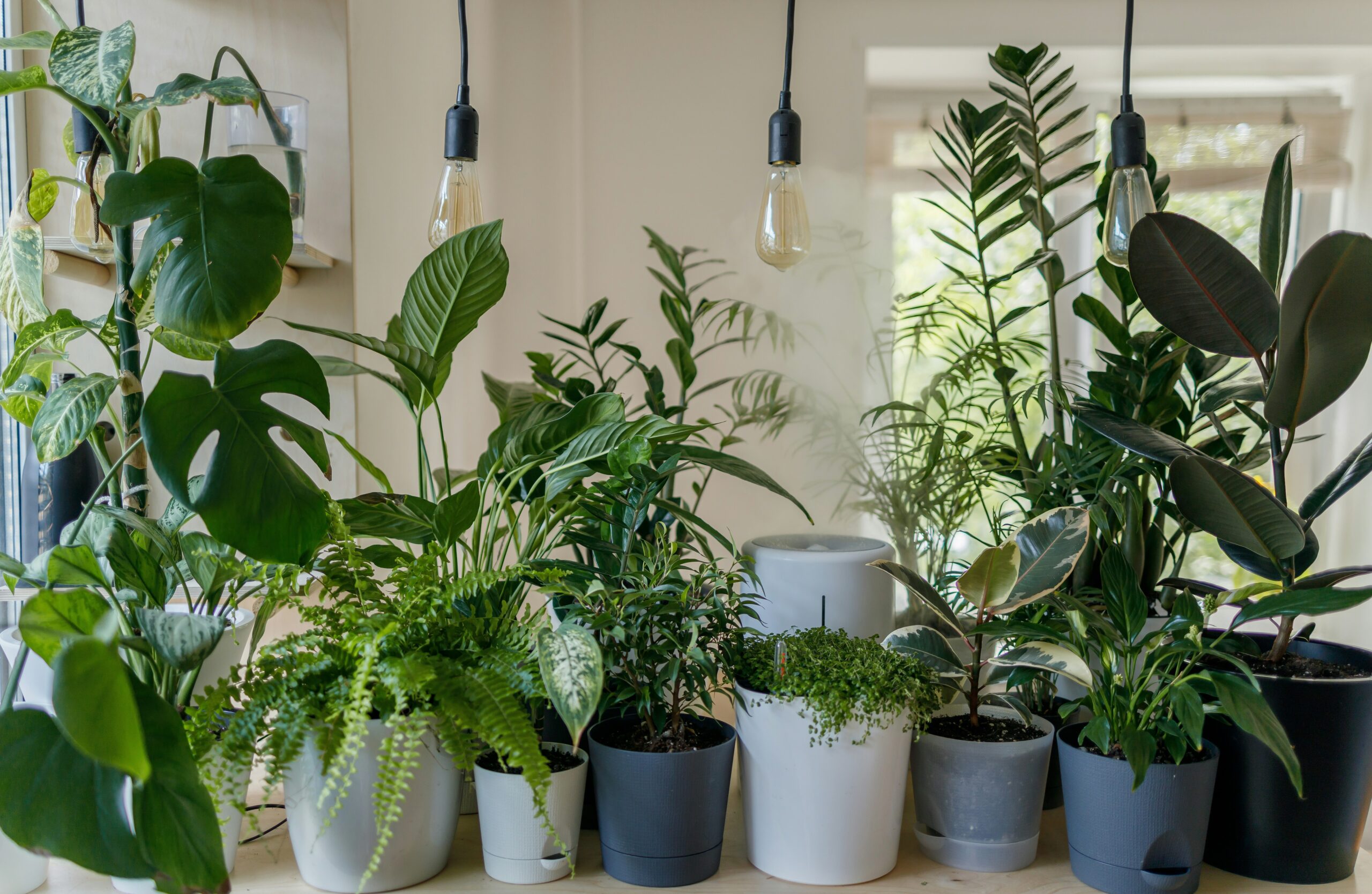Houseplants are a delightful addition to any home, offering not only aesthetic beauty but also a myriad of health benefits. They purify the air, boost mood, and even improve productivity. However, the winter season presents unique challenges for houseplant care. As the days grow shorter and temperatures drop, indoor conditions can become less than ideal for plant growth. This guide aims to provide an exhaustive overview of how to keep your houseplants alive and thriving through the winter months, covering everything from understanding the challenges to specific care practices and troubleshooting common issues.
Understanding Winter Challenges for Houseplants
Winter brings a host of challenges that can stress houseplants, including reduced light, fluctuating temperatures, and decreased humidity. Recognizing these issues is the first step toward creating an environment in which your plants can thrive.
- Reduced Light:
- Shorter Days: With fewer daylight hours, plants receive less natural light, which is crucial for photosynthesis.
- Lower Light Intensity: Winter sun is often weaker and less intense, providing lower light levels even during the day.
- Temperature Variations:
- Indoor Heating: While heating keeps homes warm, it can cause uneven temperature distribution, leading to hot spots near radiators and cold drafts by windows.
- Cold Drafts: Drafts from doors and windows can create sudden temperature drops, stressing plants.
- Dry Air:
- Reduced Humidity: Heating systems dry out the air, reducing indoor humidity levels significantly below what many plants prefer.
- Transpiration Issues: Dry air can cause increased water loss through plant leaves, leading to dehydration.
- Watering Challenges:
- Overwatering: Reduced plant growth in winter means they need less water, and overwatering can lead to root rot.
- Underwatering: Conversely, the dry indoor air can cause soil to dry out quickly, risking underwatering.
Choosing the Right Plants for Winter Conditions
Selecting houseplants that are naturally resilient to the conditions typically found indoors during winter can make care easier. Here are some suggestions:
- Low Light Tolerant Plants:
- Snake Plant (Sansevieria): Also known as mother-in-law’s tongue, this plant is nearly indestructible and can survive in low light and with infrequent watering.
- ZZ Plant (Zamioculcas zamiifolia): Another low-maintenance plant that thrives in low light and needs very little water.
- Pothos (Epipremnum aureum): This vine is very forgiving and can grow in a variety of light conditions, making it ideal for winter.
- Humidity Tolerant Plants:
- Spider Plant (Chlorophytum comosum): Prefers moderate humidity but is adaptable to less humid environments.
- Peace Lily (Spathiphyllum): Enjoys higher humidity but can survive in typical indoor air.
- Temperature Resilient Plants:
- Cast Iron Plant (Aspidistra elatior): Named for its ability to withstand neglect, this plant can handle low light and temperature fluctuations.
- Chinese Evergreen (Aglaonema): Known for its tolerance to low light and a range of temperatures, making it a great winter survivor.
Light Management
Managing light effectively is crucial during winter when natural light is limited. Here’s how to optimize light conditions for your plants:
- Maximize Natural Light:
- Placement: Move plants to south or west-facing windows where they can get the most sunlight.
- Cleaning Windows: Dirty windows can block significant amounts of light. Clean them regularly to maximize light penetration.
- Curtains and Blinds: Keep these open during the day to let in as much light as possible.
- Supplemental Lighting:
- Grow Lights: Full-spectrum grow lights can supplement natural light. LED grow lights are particularly effective and energy-efficient.
- Placement: Position grow lights close to plants but not so close as to cause overheating. A distance of 6-12 inches is usually ideal.
- Timers: Use timers to provide consistent light schedules, mimicking natural daylight cycles. Aim for 12-16 hours of light per day for most plants.
- Reflective Surfaces:
- Mirrors and Reflective Surfaces: Placing mirrors or reflective surfaces near plants can help bounce additional light onto them.
- Light Shelves: Consider using white or reflective shelves to maximize light distribution.
Temperature Control
Maintaining stable temperatures is essential for plant health. Here’s how to manage indoor temperatures effectively:
- Consistent Temperatures:
- Ideal Range: Most houseplants thrive in temperatures between 60-75°F (15-24°C). Avoid placing plants near drafts, heaters, or cold windows.
- Thermometers: Use indoor thermometers to monitor temperatures in different rooms. Ensure your plants are in areas with stable temperatures.
- Protecting from Cold Drafts:
- Window Insulation: Use window insulation kits or heavy curtains to prevent cold drafts from windows.
- Room Dividers: Place room dividers or screens to shield plants from direct exposure to drafts and create micro-environments with more stable temperatures.
- Heating Solutions:
- Space Heaters: If a room is particularly cold, use a space heater to maintain a more consistent temperature. Ensure it is placed safely and not too close to the plants.
- Heat Mats: For plants that need warmer soil temperatures, consider using heat mats designed for seedlings. These can help maintain root zone warmth.
- Night and Day Temperature Differences:
- Gradual Adjustments: Avoid sudden temperature changes. Gradually adjust room temperatures if needed to prevent plant shock.
- Night Temperatures: Many plants can tolerate cooler night temperatures, but avoid extremes. Aim for a slight drop in temperature to mimic natural conditions.
Humidity Management
Maintaining adequate humidity levels is one of the biggest challenges during winter. Here’s how to manage indoor humidity for your plants:
- Increasing Humidity:
- Humidifiers: Use a humidifier to maintain indoor humidity levels between 40-60%. This is particularly important for plants that require higher humidity.
- Pebble Trays: Place plants on trays filled with water and pebbles. As the water evaporates, it increases the humidity around the plants.
- Misting: Regularly misting plants can help increase humidity, though it should be done carefully to avoid over-wetting leaves and soil.
- Monitoring Humidity:
- Hygrometers: Use a hygrometer to measure indoor humidity levels. This helps you track and adjust humidity as needed.
- Adjusting as Needed: Adjust humidifier settings or use additional methods like pebble trays and misting to maintain ideal humidity.
- Creating Micro-Environments:
- Grouping Plants: Grouping plants together can create a micro-environment with higher localized humidity.
- Terrariums: Consider placing humidity-loving plants in terrariums, which naturally maintain higher humidity levels.
- Humidity-Friendly Locations:
- Bathrooms and Kitchens: These areas often have higher humidity due to showers and cooking. Place humidity-loving plants in these rooms if possible.
- Water Features: Indoor water features like fountains can help increase humidity levels in the surrounding area.
Watering Practices
Proper watering is crucial, especially during winter when plants’ needs change. Here’s how to manage watering effectively:
- Adjusting Watering Frequency:
- Reduced Watering: Most houseplants require less water in winter due to slower growth. Check soil moisture before watering and allow the top inch of soil to dry out between waterings.
- Watering Schedule: Establish a consistent but less frequent watering schedule. Overwatering can lead to root rot, while underwatering can cause dehydration.
- Water Quality:
- Room Temperature Water: Use water at room temperature to avoid shocking plant roots. Cold water can cause root stress.
- Filtered Water: Use filtered or distilled water to prevent mineral buildup in the soil. This is especially important for sensitive plants like orchids and ferns.
- Drainage and Soil:
- Well-Draining Soil: Ensure pots have drainage holes and use well-draining soil mixes. This prevents water from sitting in the soil and causing root rot.
- Avoid Standing Water: Empty saucers under pots to prevent roots from sitting in water. Standing water can lead to root rot and other issues.
- Signs of Overwatering and Underwatering:
- Overwatering: Symptoms include yellowing leaves, mushy stems, and a foul odor from the soil. Reduce watering and ensure proper drainage.
- Underwatering: Symptoms include dry, crispy leaves, and wilting. Increase watering frequency and check soil moisture regularly.
- Watering Techniques:
- Bottom Watering: Place pots in a tray of water and allow the soil to absorb moisture from the bottom. This encourages healthy root growth and reduces the risk of overwatering.
- Top Watering: Water from the top, ensuring even distribution. Water until it drains from the bottom, then empty the saucer.
Fertilizing Practices
Fertilizing needs change during winter as plants’ growth slows. Here’s how to manage fertilization:
- Reduced Feeding:
- Dormancy Awareness: Many plants enter a dormant phase in winter and require less fertilizer. Over-fertilizing can harm plants during this period.
- Light Feeding: If necessary, use a diluted, balanced fertilizer every 6-8 weeks. Avoid heavy feeding during winter.
- Signs of Nutrient Deficiency:
- Yellowing Leaves: May indicate a need for light fertilization. However, check for other factors like overwatering or pest issues first.
- Stunted Growth: Can be a sign of nutrient deficiency, though often growth slows naturally in winter. Light fertilization may help if other care practices are optimal.
- Organic Fertilizers:
- Compost Tea: Use diluted compost tea as a gentle, organic fertilizer. It provides nutrients without the risk of over-fertilizing.
- Worm Castings: Incorporate worm castings into the soil for slow-release nutrients.
- Synthetic Fertilizers:
- Balanced Formulas: Use a balanced, water-soluble fertilizer diluted to half strength. Avoid high-nitrogen formulas that promote excessive growth.
Pruning and Maintenance
Regular maintenance is essential for plant health and appearance. Here’s how to care for your plants through pruning and other maintenance practices:
- Pruning:
- Removing Dead Growth: Regularly trim dead or yellowing leaves to improve plant health and appearance. Use clean, sharp scissors or pruning shears.
- Shape Maintenance: Prune to maintain the desired shape and encourage new growth. Cut back leggy or overgrown stems to promote bushier growth.
- Seasonal Pruning: Prune during late winter or early spring when plants begin to grow actively. Avoid heavy pruning during winter dormancy.
- Cleaning:
- Dusting Leaves: Regularly dust leaves with a soft, damp cloth to ensure maximum light absorption. Dust can block light and reduce photosynthesis.
- Inspecting for Pests: Check plants for pests like spider mites, aphids, and mealybugs, which can be more common in dry indoor environments. Early detection is key to effective control.
- Pest Management:
- Natural Pest Control: Use neem oil sprays or insecticidal soap to control pests. Avoid harsh chemicals that can harm plants.
- Preventive Measures: Regularly inspect plants and quarantine new or infested plants to prevent the spread of pests. Keep humidity levels in check to discourage pests.
- Repotting and Transplanting:
- Assessing Need for Repotting: Look for roots growing out of drainage holes or circling the pot interior. Soil degradation or salt buildup may also indicate the need for repotting.
- Best Practices for Repotting: Choose a slightly larger pot and use fresh, well-draining soil. Repot during late winter or early spring when plants start to grow actively.
- Transplant Shock: Minimize transplant shock by handling roots carefully and watering thoroughly after repotting.
Specific Plant Care Tips
Different plants have unique needs, and understanding these can help you provide optimal care. Here’s a detailed look at caring for specific types of houseplants during winter:
- Succulents and Cacti:
- Light: Ensure bright light, using grow lights if necessary. Place in south or west-facing windows.
- Watering: Water sparingly, allowing soil to dry out completely between waterings. Overwatering is the most common cause of death in succulents and cacti.
- Temperature: Maintain temperatures between 50-70°F (10-21°C). Avoid placing near drafts or heat sources.
- Orchids:
- Humidity: Maintain high humidity with a humidifier or pebble tray. Orchids thrive in 50-70% humidity.
- Watering: Water orchids less frequently but thoroughly, allowing water to drain completely. Avoid letting water sit in the crown of the plant.
- Light: Provide bright, indirect light. Use grow lights if natural light is insufficient.
- Ferns:
- Humidity: High humidity is crucial; mist regularly or use a humidifier. Pebble trays can also help maintain moisture levels.
- Light: Provide indirect light and avoid direct sunlight, which can scorch delicate fronds.
- Watering: Keep soil consistently moist but not waterlogged. Check soil moisture regularly and water when the top inch feels dry.
- Fiddle Leaf Fig (Ficus lyrata):
- Light: Needs bright, indirect light; use supplemental lighting if needed. Rotate the plant regularly to ensure even light exposure.
- Watering: Keep soil consistently moist but not waterlogged. Water thoroughly when the top inch of soil is dry.
- Humidity: Maintain moderate humidity levels. Use a humidifier or pebble tray to increase humidity if needed.
- Pruning: Prune to maintain shape and remove any dead or damaged leaves. Clean leaves regularly to ensure maximum light absorption.
- Peace Lily (Spathiphyllum):
- Light: Prefers low to moderate light. Avoid direct sunlight, which can scorch leaves.
- Watering: Keep soil consistently moist. Peace lilies are sensitive to underwatering and will wilt if they dry out.
- Humidity: Thrives in higher humidity. Use a humidifier or mist regularly to maintain moisture levels.
- Spider Plant (Chlorophytum comosum):
- Light: Tolerates a range of light conditions but prefers bright, indirect light.
- Watering: Keep soil consistently moist, allowing the top inch to dry out between waterings.
- Humidity: Adaptable to various humidity levels but prefers moderate humidity.
- Snake Plant (Sansevieria):
- Light: Extremely adaptable, tolerating low to bright light.
- Watering: Water sparingly, allowing soil to dry out completely between waterings. Overwatering can lead to root rot.
- Temperature: Tolerates a wide range of temperatures but prefers 60-75°F (15-24°C).
- ZZ Plant (Zamioculcas zamiifolia):
- Light: Thrives in low to bright, indirect light.
- Watering: Water infrequently, allowing soil to dry out completely between waterings.
- Temperature: Prefers temperatures between 60-75°F (15-24°C).
- Cast Iron Plant (Aspidistra elatior):
- Light: Tolerates low light and is very forgiving.
- Watering: Water moderately, allowing soil to dry out between waterings.
- Temperature: Can handle a wide range of temperatures and neglect.
- Chinese Evergreen (Aglaonema):
- Light: Prefers low to moderate light. Avoid direct sunlight.
- Watering: Keep soil evenly moist but not waterlogged.
- Temperature: Thrives in temperatures between 60-75°F (15-24°C).
Advanced Plant Care Techniques
For plant enthusiasts looking to go beyond basic care, here are some advanced techniques to ensure your houseplants thrive during winter:
- Soil Testing and Amendments:
- Soil pH Testing: Use a soil pH tester to ensure the soil is within the optimal range for your specific plants. Most houseplants prefer a pH between 6.0 and 7.0.
- Soil Amendments: Amend soil with organic matter like compost or worm castings to improve nutrient content and drainage.
- Hydroponics and Semi-Hydroponics:
- Hydroponics: Growing plants in a soil-less medium like water with nutrient solutions can be beneficial in controlling nutrient levels and avoiding soil-related issues.
- Semi-Hydroponics: Use a medium like LECA (Lightweight Expanded Clay Aggregate) for better control over watering and root aeration.
- Propagation Techniques:
- Cuttings: Propagate plants by taking cuttings and rooting them in water or soil. This is a great way to multiply your plants.
- Division: Divide larger plants to create new, healthy plants. This works well for plants like peace lilies and spider plants.
- Layering: For plants like pothos and philodendrons, layering allows new roots to form while still attached to the mother plant.
- Seasonal Adjustments:
- Light Adjustments: Adjust light intensity and duration seasonally to mimic natural conditions. Increase light exposure as days lengthen in spring.
- Watering and Fertilizing Schedule: Gradually increase watering and fertilizing as plants come out of dormancy in spring.
- Integrated Pest Management (IPM):
- Biological Controls: Introduce beneficial insects like ladybugs or predatory mites to control pests naturally.
- Cultural Practices: Rotate plants and use clean tools to prevent the spread of pests and diseases.
- Environmental Monitoring Systems:
- Smart Sensors: Use smart sensors to monitor soil moisture, light levels, temperature, and humidity. These systems can provide real-time data and alerts.
- Automated Systems: Consider automated watering and lighting systems to maintain consistent care, especially if you travel frequently.
Conclusion
Caring for houseplants in winter requires a thorough understanding of their needs and the ability to adapt your care routine to meet the challenges posed by reduced light, dry air, and temperature fluctuations. By following the comprehensive guidelines outlined in this guide, you can ensure your houseplants not only survive but thrive through the winter months, bringing beauty and vitality to your indoor spaces year-round.
Additional Resources
For further reading and resources on houseplant care, consider the following:
- Books:
- “The Complete Houseplant Survival Manual” by Barbara Pleasant
- “The House Plant Expert” by Dr. D.G. Hessayon
- “How Not to Kill Your Houseplant” by Veronica Peerless
- Online Communities:
- Reddit’s r/houseplants: A vibrant community of plant enthusiasts sharing tips and experiences.
- Houseplant Hobbyist Facebook Group: A group where members discuss plant care and share advice.
- Websites:
- The Spruce: Offers a wealth of articles and tips on houseplant care.
- Gardenista: Provides guides on winter care for indoor plants.
- Houseplant Central: Features detailed plant care guides and troubleshooting tips.
- Local Resources:
- Gardening Clubs: Local gardening clubs often offer workshops and advice tailored to your region’s climate.
- Nurseries: Local nurseries can provide specific recommendations and care tips for plants suited to your area.
- Online Courses and Workshops:
- MasterClass: Offers courses on gardening and plant care by experts in the field.
- Skillshare: Features a variety of plant care classes that cover everything from basics to advanced techniques.
By leveraging these resources and applying the knowledge from this guide, you can confidently care for your houseplants through the winter, ensuring they remain healthy and vibrant, contributing to a green and lively home environment.



